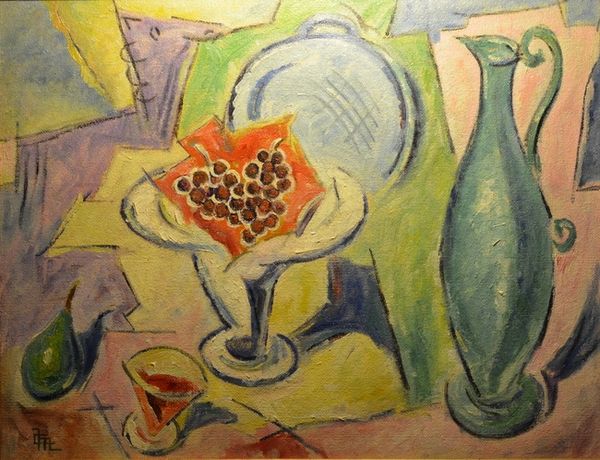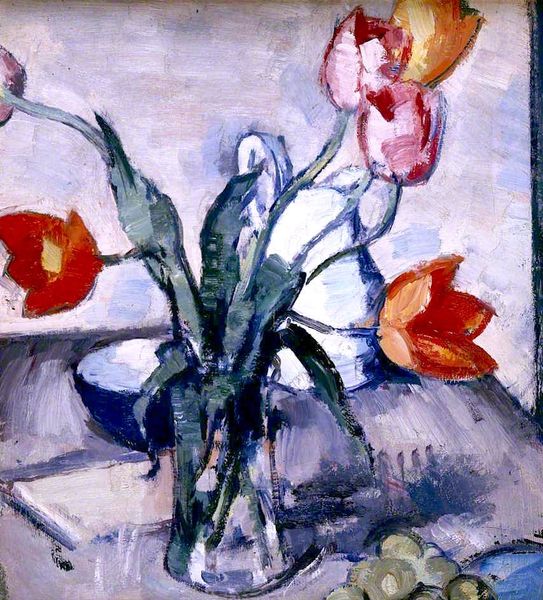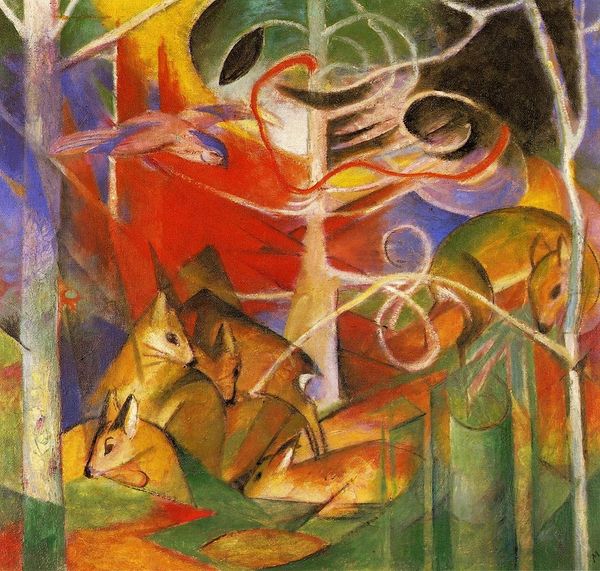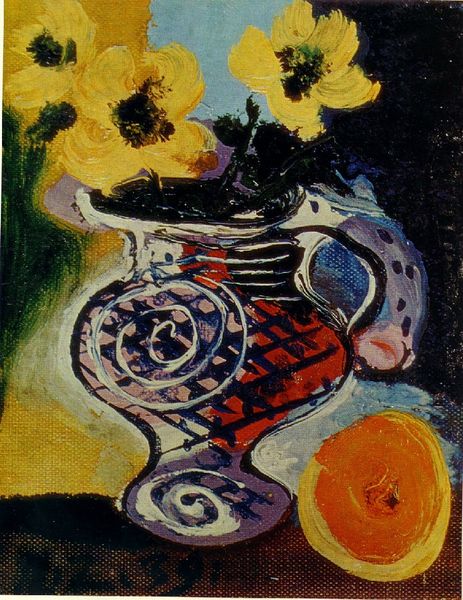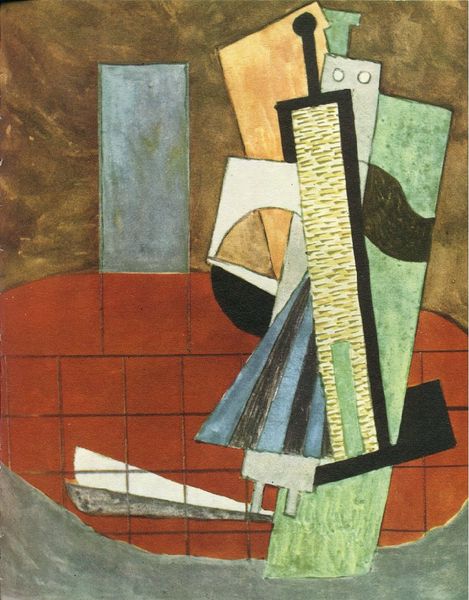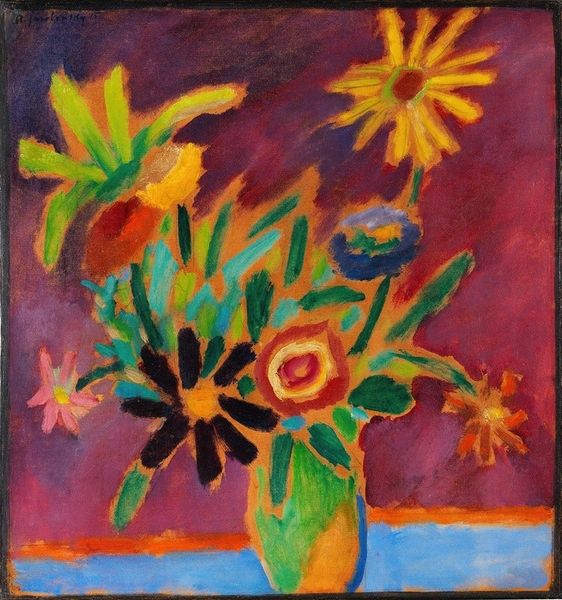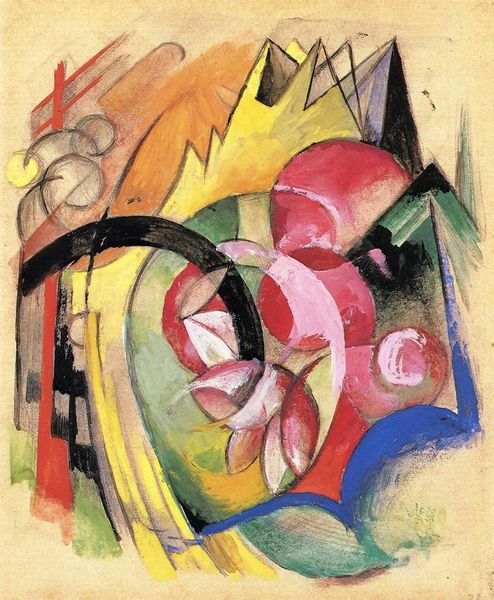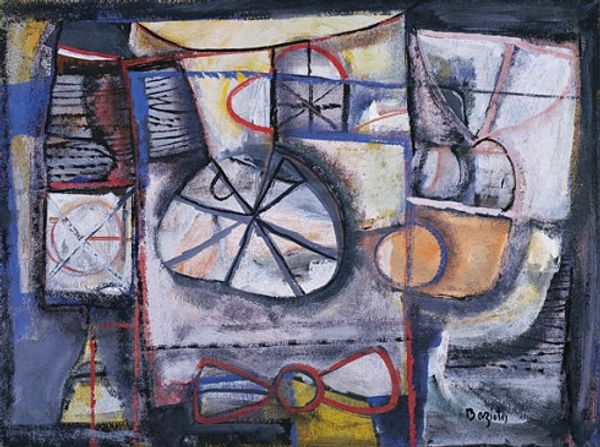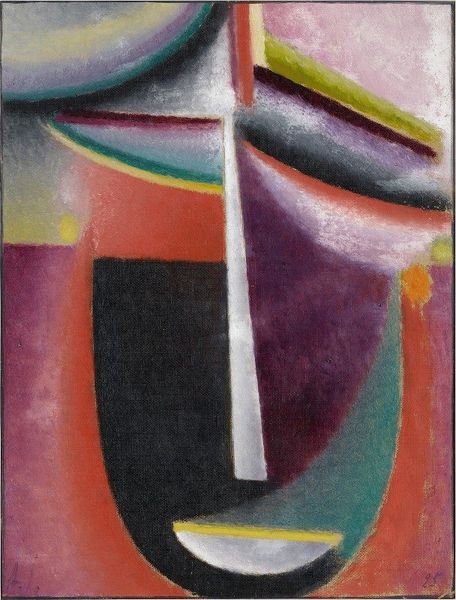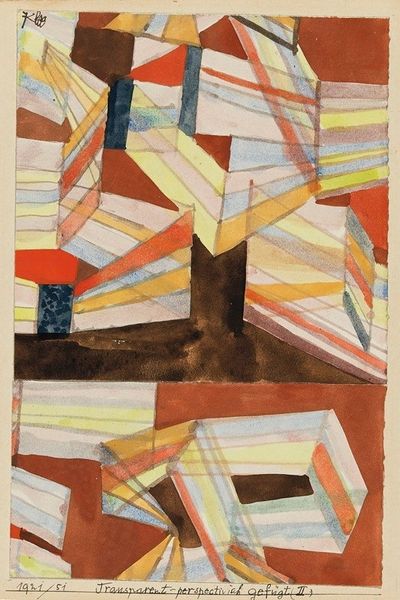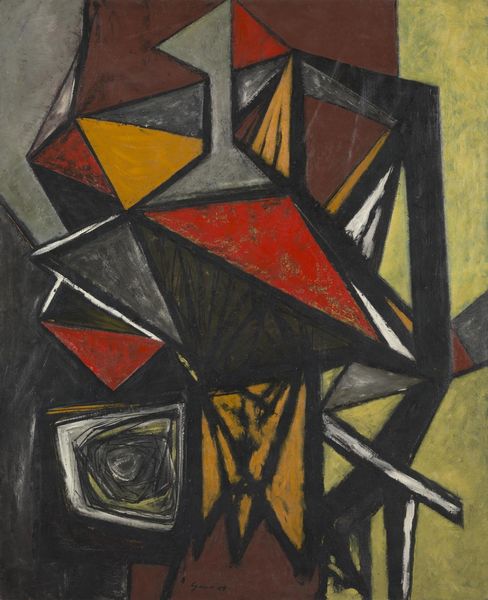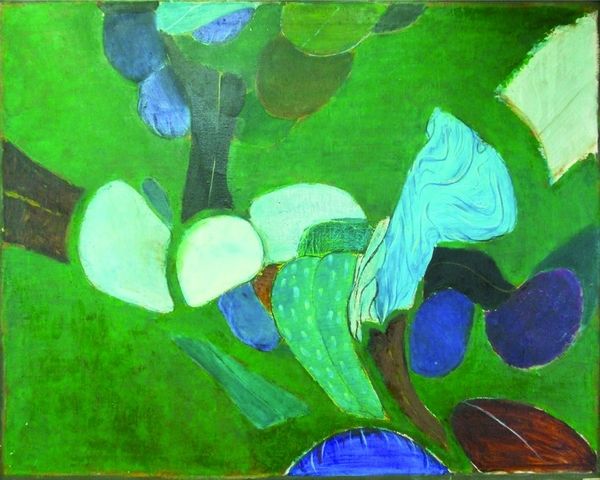
painting, oil-paint
#
still-life
#
cubism
#
painting
#
oil-paint
#
oil painting
#
modernism
Dimensions: 65 x 49.5 cm
Copyright: Pablo Picasso,Fair Use
Curator: I’m struck by the unsettling quality of this still life. The colors feel muted, and the geometric fracturing is almost violent. Editor: That's an insightful observation. You're looking at Pablo Picasso’s “Vase with Flowers,” created in 1943, a significant year during the Second World War. Curator: Ah, that context is crucial. Looking again, the pale blossoms against that drab background evoke feelings of fragility and resilience—the will to find beauty amidst conflict, perhaps? Flowers, often symbolic of hope and renewal, seem intentionally delicate here. Editor: Precisely. The style, clearly Cubist, fractures not only the forms but also conventional perspectives. Notice how Picasso employs oil paint to build up textures, juxtaposing the solid vase with almost ethereal blooms. Curator: Yes, the vase itself, reduced to almost pure angular structure, feels like a cage. I can almost imagine the painting suggesting an entrapment within social turmoil. And that other vase, empty! Is it simply the remains or lack thereof, rendered symbolically as something lost and irreparable? Editor: Your sensitivity is astute. One can interpret its meaning along those lines, while looking at form, there's a compelling interplay between transparency and solidity. Picasso's use of line emphasizes the constructed nature of the objects and creates visual tension within the painting. Semiotically speaking, the deconstruction serves to underscore conflict between objecthood and lived experience. Curator: It is fascinating how an artwork that presents such visual disharmony is actually such a powerful cultural symbol—still life during such strife as life, and hope for its survival and regeneration as expressed through his medium. Editor: Agreed. In this case, “Vase with Flowers,” while initially unsettling, becomes a layered statement, as form becomes meaning during a moment of historical crisis. The longer we look, the more the historical moment permeates Picasso’s choice of form and design.
Comments
No comments
Be the first to comment and join the conversation on the ultimate creative platform.
